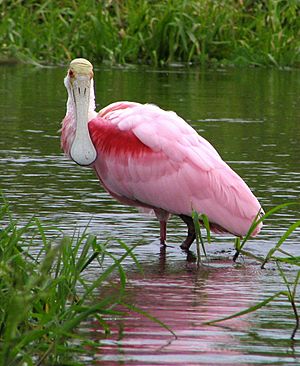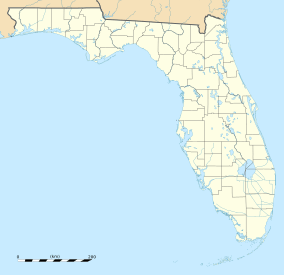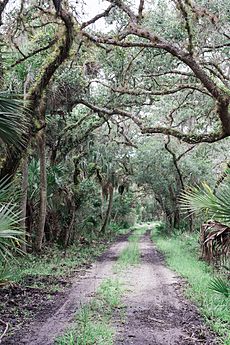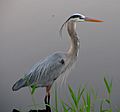Myakka River State Park facts for kids
Quick facts for kids Myakka River State Park |
|
|---|---|
|
IUCN Category V (Protected Landscape/Seascape)
|
|
| Location | Manatee and Sarasota counties, Florida, USA |
| Nearest city | Sarasota, Florida |
| Area | 37,000 acres (150 km2) |
| Established | February 18, 1941 |
| Governing body | Florida Department of Environmental Protection |

Myakka River State Park is a large and historic state park in Florida. It's located about 9 miles (14 km) east of Sarasota, Florida, mainly in Sarasota County. A small part of it is in Manatee County. This park covers about 37,000 acres (150 km²), making it one of the biggest parks in the state. It's also one of Florida's oldest parks, first planned in the 1930s. The park is named after the Myakka River, which flows through it.
Contents
Nature and Wildlife
Myakka River State Park is a special natural area in Florida. It has many different types of environments. In drier parts of the park, you can find pine forests. These are woodlands with tall longleaf pine and slash pine trees. The ground is often covered with grasses and shrubs. There are also "scrubby flatwoods" with low trees and bushes, and "dry prairies" which are flat, open grasslands with very few trees.
Wetlands and Water Features
The park also has many wet areas, called wetlands. These include marshes, which are grassy areas that are often flooded. You can also see "cypress domes," which are small, round groups of bald cypress trees growing in wet spots. They look like domes because the trees in the middle grow taller.
A unique feature in the park is a deep karst sinkhole called Deep Hole. It's 41 meters (135 feet) deep and is located by the Myakka River.
Along the rivers, you'll find thick forests called "hammocks" and "floodplain forests." These areas have many different kinds of trees, both evergreen and those that lose their leaves.
Things to Do
Myakka River State Park is famous for its amazing wildlife. You might see rare birds like the roseate spoonbill. The park is also home to many types of fish, amphibians, reptiles, and mammals. It's a great place to watch and learn about Florida's native animals and plants.
Exploring the Park
The park has an excellent system of trails for hiking. You can walk for miles on the trails that crisscross the eastern side of the park.
If you enjoy camping, there are six basic campgrounds. These are called Mossy Hammock, Bee Island, Panther Point, Honore, Oak Grove, and Prairie. You can reach them by walking the trails.
Horseback riding and biking are allowed on certain trails and roads. These areas often have wide-open spaces with low plants like saw palmetto, mixed with "islands" of tall pine and oak trees.
Driving and Activities
A large part of the park can be explored by car. The main road is 6.5 miles (10.5 km) long and connects the north and south ends of the park. This road leads visitors to a boardwalk that goes out over the river. There's also a lake that's perfect for bird watching.
The main drive is also popular for cycling, running, and skating. It can get busy with bikes, especially on weekends.
A short walk from the main road, you'll find Myakka's famous Canopy walkway. This is a special suspension bridge and tower. It lets you walk high up in the trees and get an amazing view of the forest canopy and the entire park from above.
The park also has picnic areas, places for canoeing, and boat tours. You can even stay in one of the park's five cabins. These unique cabins were built using the trunks of native sabal palm trees.
Gallery
-
Alligators abound













